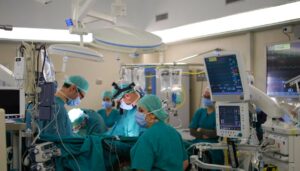Anesthesiologists have been in higher demand in recent years, and it is estimated that there will be a shortage of between 10,300 and 35,600 anesthesiologists in the U.S. by the year 2034. At the same time, these physicians are experiencing higher rates of burnout and retiring early at higher rates than previous decades. It is therefore important that we determine the best ways to utilize anesthesiologists so that we can more efficiently leverage their skills and expertise to improve health outcomes for those who can most benefit from the care of anesthesiologists.
One factor when considering anesthesia care is the risk associated with the relevant procedure. Many low-risk, outpatient procedures, for instance, occur without anesthesiologists present. A new study published in JAMA Internal Medicineinvestigated the prevalence of anesthesia care for cataract surgeries specifically when compared to other low-risk outpatient procedures.
The researchers evaluated more than 36,000 patients who had undergone cataract surgery and found that anesthesia care was more likely to occur for Medicare beneficiaries undergoing this procedure compared to other low-risk outpatient procedures. At the same time, those who had undergone cataract surgery experienced fewer surgery-related complications.
The authors of the study conclude that the data suggest that anesthesia care may not be needed as much in cataract surgeries it is currently being used and that more selective use of anesthesia care may be warranted. However, it is important to consider whether the reduced frequency of complications observed in the cataract surgery patients may have been due to the presence of an anesthesiologist.
Future research should investigate the impact of removing anesthesia care on post-surgery complications and health outcomes. This research will help to clarify how and when anesthesiologists are most needed.
Reference
Perumal D, Dudley RA, Gan S, et al. Anesthesia Care for Cataract Surgery in Medicare Beneficiaries. JAMA Intern Med. doi:10.1001/JAMAINTERNMED.2022.4333

